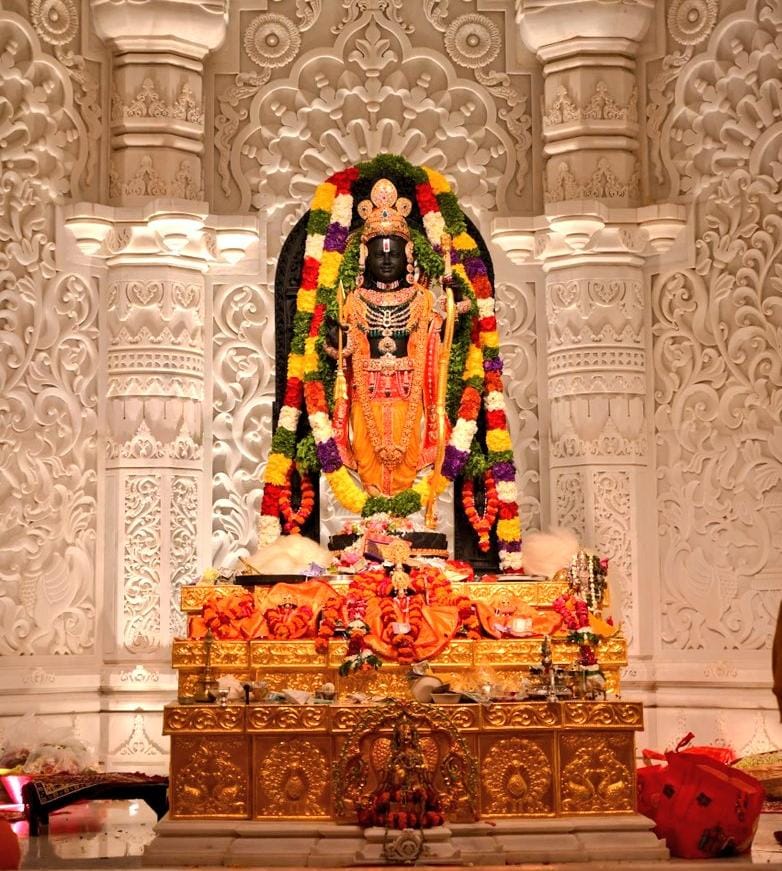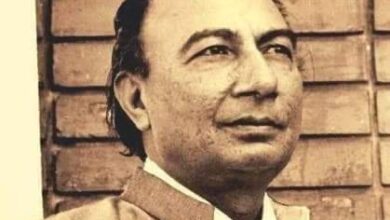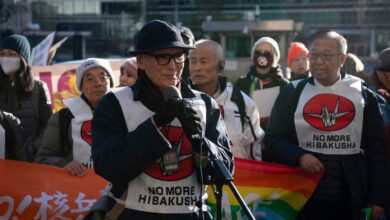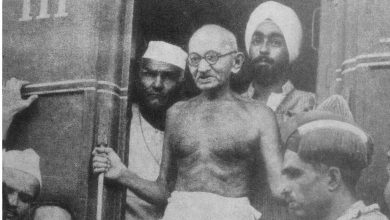Mahatma Gandhi and Ram Nam
Mahatma Gandhi was the greatest devotee of Lord Ram in modern world. He recited Ram Nam and used to play Ram Dhun in his daily prayer meetings. Inauguration of Ram Mandir in Ayodhya has evoked huge interest in Lord Ram . Siby K Joseph explains who was Gandhi’s Ram.
Dr. Siby K. Joseph
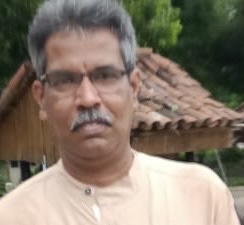
Mahatma Gandhi’s doppelganger reached Ayodhya on foot 19 Jan 2024. He was carrying a placard with photographs of Mahatma Gandhi, Lal Bahadur Shastri, Babasaheb Ambedkar, Bal Gangadhar Tilak, Bhagat Singh, Chandrashekhar Azad, APJ Abdul Kalam, and Swami Vivekanand. The placard also has pictures of Lord Ram, Sita, Laxman and Lord Hanuman and the Ram Temple at Ayodhya prominently. Gandhi’s look alike was identified as Mutanna Tirlapur,54, a native of Karnataka’s Gadag district who has been dressing himself like Gandhi for a quite long time. The PTI quoted that “The idea behind this is to spread awareness in the society about the values Mahatma Gandhi stood for.” His image carrying the placard went viral and it was published in national dailies and news channels giving credit to PTI. Therefore, it would be interesting to know Mahatma Gandhi’s understanding of Rama, on temple /idol worship, his very message on the occasion of opening or consecration of temple and related matters.
Ram in Gandhi’s life
Let us look at the place of Rama in Gandhi’s life and who was Gandhi’s Ram. Gandhi explains in his Autobiography how Ram nama came into his life. He wrote “I have said before that there was in me a fear of ghosts and spirits. Rambha, for that was her name, suggested, as a remedy for this fear, the repetition of Rama nama. I had more faith in her than in her remedy, and so at a tender age I began repeating Rama nama to cure my fear of ghosts and spirits. This was of course short-lived, but the good seed sown in childhood was not sown in vain. I think it is due to the seed sown by that good woman Rambha that today Ramanama is an infallible remedy for me.”
Gandhi realized that the word Ram is very much embedded in the psyche of India as a symbol of truth and righteousness and his use of the word was symbolic. For him Rama, Allah and God were convertible terms and he explains the context and the reason for propagating Ram nama. He wrote in Young India January 22, 1925 “Rama, Allah and God are to me convertible terms. I had discovered that simple people deluded themselves into the belief that I appeared to them in their distress. I wanted to remove the superstition. I knew that I appeared to nobody. It was pure hallucination for them to rely upon a frail mortal. I, therefore, presented them with a simple and well tried formula that has never failed, namely, to invoke the assistance of God every morning before sunrise and every evening before bed-time for the fulfillment of the vows. …. Learning takes us through many stages in life, but it fails us utterly in the hour of danger and temptation. Then, faith alone saves. Rama nama is not for those who tempt God in every way possible and ever expect it to save. It is for those who walk in the fear of God, who want to restrain themselves and cannot in spite of themselves.”
Gandhi again clarifies on this point while answering a question by a Missionary friend whether he followed any spiritual practices. Gandhi wrote in Harijan December 5, 1936 : “The practice I follow is a practice I learnt in my childhood from my nurse. I was afraid of ghosts. She used to say to me: ‘There are no ghosts, but if you are afraid, repeat Rama nama.’ What I learnt in my childhood has become a huge thing in my mental firmament. It is a sun that has brightened my darkest hour. A Christian may find the same solace from the repetition of the name of Jesus, and a Muslim from the name of Allah.” Thus it is clear that for Gandhi the use of the name Rama, Allah and Jesus were the same and the one.
Gandhi’s use of Rama and the use of Ram dhun in his prayers created confusion in the minds of people during his lifetime itself. In response to the question how non-Hindus could take part in Rama dhun, Gandhi clearly explained what was his vision of Rama. He wrote in Harijan on April 28, 1946: “I laugh within myself when someone objects that Rama or the chanting of Rama nama is for Hindus only, how can Mussulmans, therefore, take part in it? Is there one God for the Mussulmans and another for the Hindus, Parsis, or Christians? No, there is only one omnipotent, and omnipresent God. He is named variously and we remember Him by the name which is most familiar to us.” He asserted “My Rama, the Rama of our prayers, is not the historical Rama, the son of Dasharatha — the King of Ayodhya. He is the eternal, the unborn, the one without a second. Him alone I worship, His aid alone I seek, and so should you. He belongs equally to all. I, therefore, see no reason why a Mussulman or anybody should object to taking his name. But he is in no way bound to recognize God as Rama. He may utter to himself Allah or Khuda so as not to mar the harmony of the sound”
Even though Gandhi clarified many times what Rama meant to him, questions were often raised by people. Gandhi was never tired answering such questions. The following one was one of such questions placed before him. He answered it in the columns of Harijan on June 2, 1946. The question was “You have often said that when you talk of Rama you refer to the Ruler of the Universe and not to Rama, the son of Dasharatha. But we find that your Ramadhun calls on ‘Sita-Rama’, ‘Raja Rama’ and it ends with ‘Victory to Rama, the Lord of Sita’. Who is this Rama if not the son of the King Dasharatha? “ Gandhi answered it in the following words “ In Ramadhun ‘Raja Rama’, ‘Sita-Rama’ are undoubtedly repealed. But more potent than Rama is the Name. Hindu dharma is like a boundless ocean teeming with priceless gems. The deeper you dive the more treasures you find. In Hindu religion, God is known by various names. Thousands of people look doubtless upon Rama and Krishna as historical figures and literally believe that God came down in person on earth in the form of Rama, the son of Dasharatha and by worshipping him one can attain salvation. The same thing holds good about Krishna. History, imagination and truth have got so inextricably mixed up. It is next to impossible to disentangle them. I have accepted all the names and forms attributed to God as symbols connoting one formless, omnipresent Rama. To me, therefore, Rama described as the Lord of Sita, son of Dasharatha, is the all-powerful essence whose name inscribed in the heart removes all suffering — mental, moral and physical.”
Nuanced understanding of Ram
This nuanced understanding of Ram was the result of spiritual quest for many years and it evolved in the course of time. This was evident from his reply to an Arya Samajist which appeared in the Harijan on September 22, 1946. “ The important question is as to how Rama, the son of Dasharatha, can be deemed immortal. This question was raised by Saint Tulsidas himself and answered by him. The answer cannot in reality be reasoned out. It does not lend itself to intellectual satisfaction. It is a matter of heart speaking to heart. I worshipped Rama as Sita’s husband in the first instance, but as my knowledge and experience of Him grew, my Rama became immortal and omnipresent. This does not mean that Rama ceased to be Sita’s husband. But the meaning of Sita’s husband expanded with the vision of Rama. This is how the world evolves. Rama cannot become omnipresent for the man who regards him merely as the son of Dasharatha. But for the believer in Rama as God, the father of the omnipresent, Rama also becomes omnipresent—the father and son become one. It may be said that this is all a matter of imagination. “To each man according to his faith,” is all that I can say. If all religions are one at source, we have to synthesize them. Today, they are looked upon as separate and that is why we kill each other. When we are tired of religion, we become atheists and then, apart from the little self, nothing, not even God, exists. But when we acquire true understanding, the little self perishes and God becomes all in all. Rama, then, is and is not the son of Dasharatha, the husband of Sita, the brother of Bharata and Lakshmana and yet is God, the unborn and eternal”
Reference to Rama was a frequent point of reference in his writings. He wrote in Harijan on November 24, 1946. “You may say you do not believe in Him. You do not know that but for His will you could not draw a single breath. Call Him Ishwara, Allah, God, Ahura Mazda. His names are as innumerable as there are men. He is one without a second. He alone is great. There is none greater than He. He is timeless, formless, stainless. Such is my Rama. He alone is my Lord and Master. ”
Gandhi wrote extensively on Ram nama and he believed that it was an infallible remedy for most of the ills of the body. It doesn’t mean that he rejected all other modern forms of medical systems in the name of Ram nama. This was evident from his reply to a correspondent on the question whether Rama nama avoids bona fide surgical operations. “Of course, it does not. It cannot restore a leg that is cut off in an accident. In many cases surgical operations are unnecessary. Where they are required, they should be performed.”
Gandhi and temple
Gandhi was not a regular visitor to the temples but was not against people going to a temple, a mosque or a church. He reflected on this theme in one of write – ups in Harijan on March 11, 1933. “I know of no religion or sect that has done or is doing without its House of God, variously described as a temple, a mosque, a church, a synagogue or an agiari. Nor is it certain that any of the great reformers including Jesus destroyed or discarded temples altogether. All of them sought to banish corruption from temples as well as from society. Some of them, if not all, appear to have preached from temples. I have ceased to visit temples for years, but I do not regard myself on that account as a better person than before. My mother never missed going to the temple when she was in a fit state to go there. Probably her faith was far greater than mine, though I do not visit temples. There are millions whose faith is sustained through these temples, churches and mosques. They are not all blind followers of a superstition, nor are they fanatics. Superstition and fanaticism are not their- monopoly. These vices have their root in our hearts and minds.” He further added.” To reject the necessity of temples is to reject the necessity of God, religion and earthly existence.” Again on March 18, 1933 “It is not necessary for any Hindu to go to a temple to worship Ramachandra. But it is for him who cannot contemplate his Rama without looking at his image in a temple. It may be unfortunate, but it is true that his Rama resides in that temple as nowhere else. I would not disturb that simple faith.” It is to be remembered that his prayer meetings were organized on open ground. He considered our bodies as real temples. He wrote in Harijan on January 4, 1948 “Our bodies are the real temples rather than buildings of stone. The best place for congregational worship is in the open with the sky above as the canopy and mother earth below for the floor. Similar was his approach on idol worship. He wrote in Young India on October 6, 1921 “An idol does not excite any feeling of veneration in me. But I think that idol-worship is part of human nature. We hanker after symbolism. Why should one be more composed in a church than elsewhere? Images are an aid to worship. No Hindu considers an image to be God. I do not consider idol-worship a sin.”
Then the question comes whether Gandhi did the opening or consecration ceremony of temples. The answer is yes. Gandhi performed the opening ceremony of the Lakshmi Narayan Temple and the Buddha Vihar in Delhi on March 18, 1939 in the absence of Pandit Madan Mohan Malaviya. There was a vast concourse of people that made it difficult for Gandhi to enter the temple precincts. The microphone arrangements were also broken. Therefore, Gandhi issued a statement to the Press about what he would, under normal conditions, have spoken.” It appeared in Harijan on March 25, 1939. The whole text is as follows:
“These two temples have been constructed at the instance of Pandit Madan Mohan Malaviya and are the result of the munificence of the House of Birlas, principally of Shri Jugal Kishore Birla who is particularly inclined in this direction. It would have been in the fitness of things if the temples had been opened by Malaviyaji who inspired their construction. But as he is not here, it has fallen to my lot to perform the ceremony.
It is my hope that both these temples will make a special contribution to promote the religious sense of the worshippers. The temple of Buddha admits of no untouchability. But even in the temple of Krishna untouchability and the idea of high and low are taboo. For me, untouchability and the idea of high and low have no room in Hinduism. There are the varnas, but none of the varnas is superior to the other.Varna does not connote superiority ; it connotes different functions and different duties.
Whoever has more of the earthly or spiritual goods has to perform more service to the community, has to be more humble. The moment untouchability and the sense of high and low crept in, Hinduism began to decline. Hinduism is based on the firm foundation of truth and non-violence and, therefore, there is no room in it for conflict with other religions.”
It must be the daily prayer of every adherent of the Hindu faith that every known religion of the world should grow from day to day and should serve the whole of humanity. I hope that these temples will serve to propagate the idea of equal respect for religions and to make communal jealousies and strife things of the past.”
From the statement issued to the Press it was clear that he wanted to convey the message of removal of untouchability and respect for all religions even on the occasion of the opening ceremony of temples.
Gandhi was a religious and spiritual personality who was closely involved in political activities. He realised that he couldn’t even do social work without politics. He was also aware that he could not pursue politics without a deep religious sensibility. Gandhi wrote in his Autobiography in the “Farewell” chapter, “…my devotion to Truth has drawn me into the field of politics; and I can say without the slightest hesitation, and yet in all humility, that those who say that religion has nothing to do with politics do not know what religion means.” Gandhi introduced the values of religion and deep religious sensitivity into the political realm. But it is to be remembered that Gandhi was not in favour of a theocratic state patronising a particular religion or even all religions equally. According to him, the State should look after secular welfare, health, communications, foreign affairs and so on but not one’s religion which is purely a personal concern. Gandhi wrote in Harijan on September 22, 1946. “If I were a dictator, religion and state would be separate. I swear by my religion. I will die for it. But it is my personal affair. The state has nothing to do with it.” It is clear that he was contemplating a secular state in free India which would give freedom to its citizens to express religious, atheist or any other identity. On November 28, 1947 he unequivocally declared “It is a secular government, that is, it is not a theocratic government, rather, it does not belong to any particular religion.” Gandhi was against utilizing money from the government treasury for reconstruction of the Somnath temple in Gujarat. Sardar Vallabhbhai Patel whole heartedly supported Gandhi’s stand and endorsed that it would be “gross adharma” if government funds were utilized for the renovation of the Somnath temple and he fully adhered to that stand vindicating secular credentials of India.
Mahatma Gandhi’s ideas regarding Lord Ram are increasingly important in the present context and it will remain as a guiding light for humanity as a whole irrespective of their religious traditions. It is the right time to revisit his ideas and learn lessons from his eternal wisdom.
Dr. Siby K. Joseph is a Gandhian academic and Scholar currently serving as the Director of Library and Research Centre of Sevagram Ashram Pratishthan, Wardha,Maharashtra. His article “Gandhi, Religion and Multiculturalism: An Appraisal” appeared in Gandhi Marg, New Delhi gives further light on Gandhi’s approach to religion .
Email: directorjbmlrc@gmail.com )

